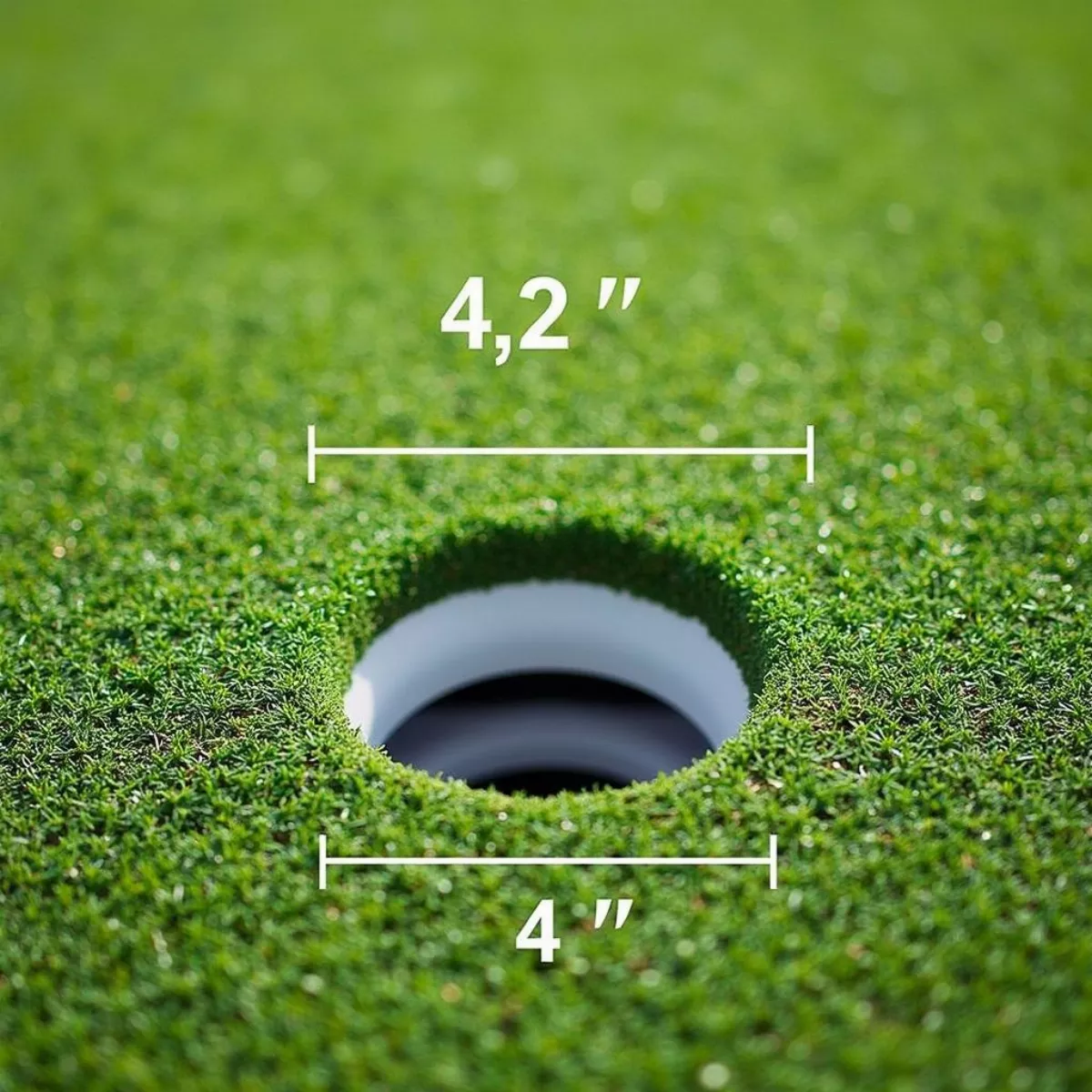Golf is a game steeped in tradition, precision, and a dash of friendly rivalry. Whether you’re a seasoned pro or just starting, understanding the dimensions of the golf hole can significantly impact your game. Yes, it’s not just a round cup on the green! In this comprehensive guide, we’ll delve into how wide the hole in golf is and why it matters.
What Is the Standard Size of a Golf Hole?
The official rule of golf, as established by the Royal and Ancient Golf Club of St Andrews and the United States Golf Association (USGA), states that:
- The diameter of a standard golf hole is 4.25 inches (10.8 centimeters).
- The hole must be cut to a depth of at least 4 inches (10 centimeters).
These specifications are the same for all holes on the course. While this might seem insignificant, the size plays a vital role in the game.
Why Is the Size of the Golf Hole Important?
Here are a few reasons why the size matters:
- Challenge Level: The hole size affects your chances of sinking a putt. A smaller diameter would require more precision, increasing the difficulty.
- Game Design: Course designers take into account hole size when creating layouts. This can influence strategies and shot placements.
- Measurements and Comparisons: Understanding the hole’s size lets players compare reality with their skill level. Players can gauge their performance by how often they sink putts.
 Standard Golf Hole Dimensions
Standard Golf Hole Dimensions
Fun Fact: The Origins
Did you know that the original golf holes were actually just a simple depression in the ground? It wasn’t until the 18th century that the diameter standard was introduced!
A Closer Look at Golf Hole Dimensions
Let’s break down the golf hole’s dimensions into a detailed table for clarity:
| Measurement | Size |
|---|---|
| Diameter | 4.25 inches |
| Depth | 4 inches |
| Standard Flag Height | 7 to 8 feet |
The Importance of the Flagstick
The flagstick, often called the pin, plays a crucial role in putting. It stands about 7 to 8 feet tall and is usually placed at the center of the hole. Here’s why it matters:
- Visual Target: The flagstick serves as a visual marker for golfers while they line up their shots.
- Element of Strategy: Players can strategize their putts based on the flag’s position. Sometimes, aiming at the flag can actually be less effective than aiming away from it to avoid tricky slopes.
 Golfer Aiming Putt at Flagstick
Golfer Aiming Putt at Flagstick
The Effect of Course Design on Hole Size
Course Layout Considerations
Golf course designers carefully consider not only the hole size but also the surrounding terrain and hazards. Elements like bunkers, water hazards, and turf type can influence how players approach the hole.
- Hazards near the hole can make it appear smaller than it is.
- Slopes around the hole can affect putt trajectory.
Strategic Gameplay
Understanding how the hole fits into the broader course strategy can help you make compatible decisions on club selections and shot placements.
- Consider the angle of approach. If the hole is positioned on a slope, aim to approach the hole from a more level stance rather than directly.
- Keep in mind the type of material on the green. Fast and firm greens will require softer approaches compared to slower ones.
Measuring Your Performance
Which Putting Statistics Matter?
To assess how well you perform with regard to the hole, consider these statistics:
- Putts per Round
- Green in Regulation (GIR)
- Three-Putt Percentage
 Golf Scorecard with Putting Statistics Highlighted
Golf Scorecard with Putting Statistics Highlighted
Improving your stats in these categories can demonstrate how effectively you’re adapting your gameplay around the 4.25-inch hole.
Key Takeaways
- The standard golf hole diameter is 4.25 inches, with a minimum depth of 4 inches.
- Hole size impacts not just the difficulty of sinking putts but also influences course design.
- Understanding course layout and strategizing your shots can enhance your game.
- Pay attention to your putting statistics to gauge and improve your performance.
Frequently Asked Questions (FAQ)
1. Why is the golf hole size standardized?
Standardization ensures consistency in gameplay across all golf courses, allowing for fair competition.
2. How deep is a golf hole?
The minimum depth is 4 inches to accommodate the flagstick and provide adequate space for the ball to fit in.
3. Does the hole diameter change for different types of golf courses?
No, the 4.25-inch diameter is maintained across all types of golf courses, from public to private.
4. Can the hole size affect my putting strategy?
Yes, understanding the hole’s size helps you refine your approach and putt strategy, improving accuracy.
5. Are all golf holes the same size?
Yes! All official golf holes on a course must adhere to the standard dimensions set by the governing bodies of golf.
6. How can I practice for the golf hole size?
Use practice greens, focusing on varying distances and angles. Implement drills that target putts to help build your precision.
7. Why is the flagstick height important?
The height provides a visual aid for aligning your shots and may impact how you choose to approach the hole.
8. Can I alter the hole size on my home course?
No, altering the hole size would violate official golf regulations and could result in an unfair playing field.
9. Does the type of grass around the hole matter?
Yes, different grass types can impact the speed and roll of the ball, affecting how you approach your putts.
10. Are there benefits to using an oversized hole in practice?
Some courses implement oversized holes for practice to boost confidence, particularly for beginners.
 Golfer Practicing Putts on Green
Golfer Practicing Putts on Green
By understanding the hole’s dimensions and its implications in your game, you can embrace golf not just as a sport but as an engaging and strategic challenge! Happy golfing!